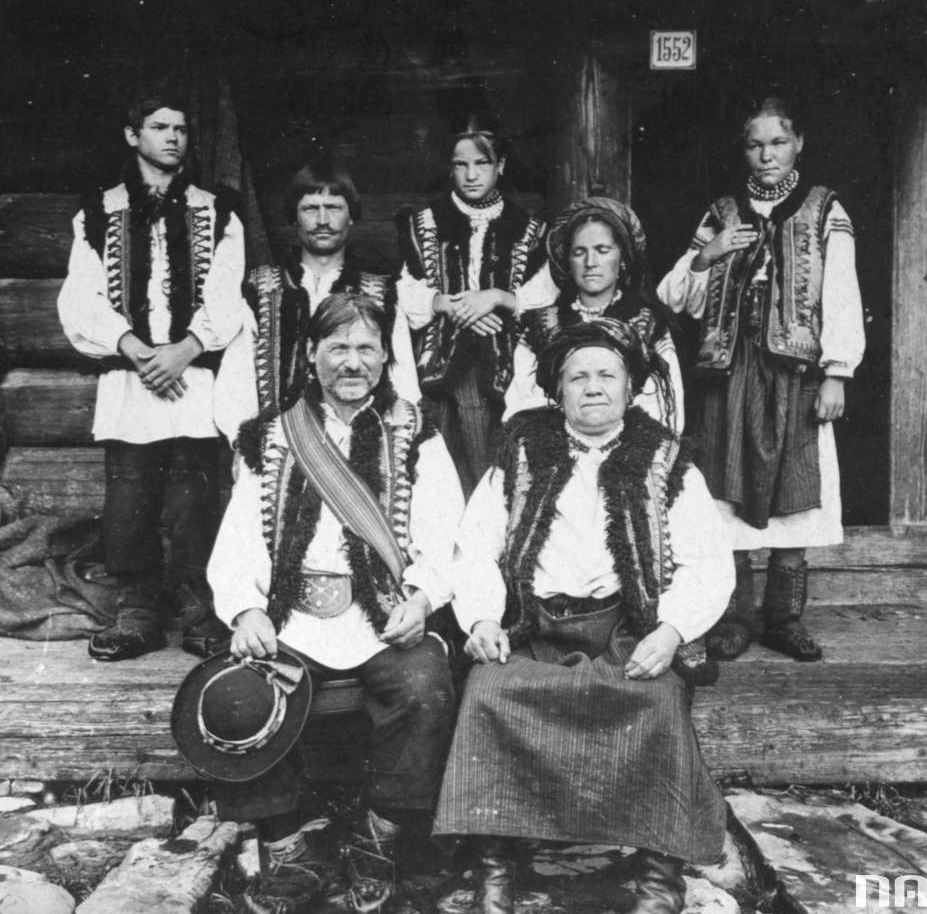
en.wikipedia.org
Language
Hutsul is either considered to be a dialect of Western Ukrainian (with some Polish influences)
[27][28][29][30] along with the dialects of the
Lemkos and
Boykos. Since the annexation of
Transcarpathia by
Soviet Union, compulsory education has been conducted only in standardized literary Ukrainian. In recent years there have been grassroots efforts to keep the traditional Hutsul dialect alive.
Way of life and culture

Hutsul wedding dress,
bead embroidery
Traditional Hutsul culture is often represented by the colorful and intricate craftsmanship of their clothing, sculpture, architecture, woodworking, metalworking (especially in
brass), rug weaving, pottery, and egg decorating (
see pysanka). Along with other Hutsul traditions, as well as their songs and dances, this culture is often celebrated and highlighted by the different countries that Hutsuls inhabit.
Ukrainian Hutsul culture bears a resemblance to neighboring cultures of western and southwestern Ukraine,
[31][32] particularly
Lemkos and
Boykos. These groups also share similarities with other Slavic highlander peoples, such as the
Gorals in
Poland and
Slovakia.
[33] Similarities have also been noted with some
Vlach cultures such as the
Moravian Wallachians in the
Czech Republic, as well as some cultures in
Romania.
[34] Most Hutsuls belong to the
Ukrainian Greek Catholic Church and the
Ukrainian Orthodox Church.
Hutsul society was traditionally based on
forestry and logging, as well as cattle and sheep breeding; the Hutsuls are credited with having created the breed of horse known as the
Hucul pony. One of the main attributes of Hutsuls' is their
Shepherd's axe (bartka), a small axe with a long handle that is still used to this day for chopping wood, as a cane, for fighting and traditional ceremonies. They would often be intricately decorated with traditional wood carving designs and passed on from generation to generation especially upon marriage.
[35] They use unique musical instruments, including the "
trembita"
(trâmbiţa), a type of
alpenhorn, as well multiple varieties of the
fife, or
sopilka, that are used to create unique folk melodies and rhythms. Also frequently used are the
duda (bagpipe), the
drymba (
Jew's harp), and the
tsymbaly (hammered dulcimer).











